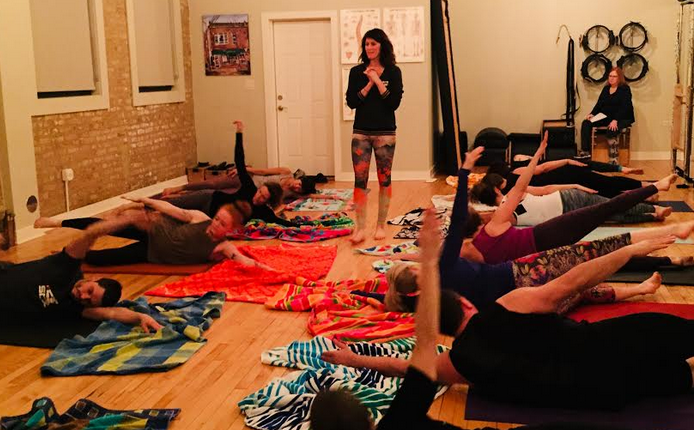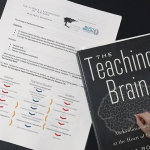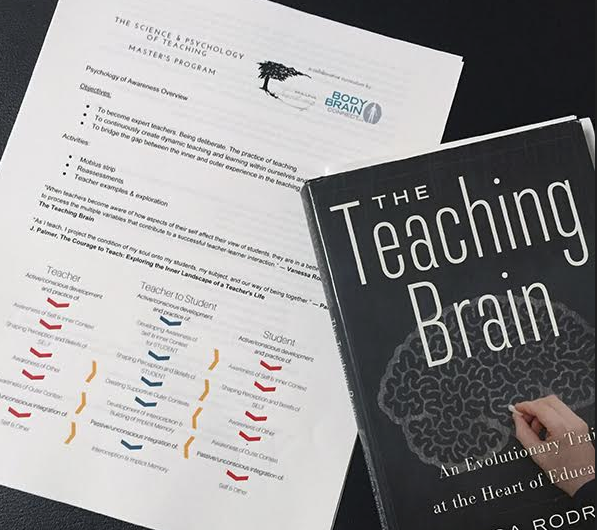Issue #326 – Wednesday, February 24, 2021
Whose Business is Bad Teaching?
Part II
by Chantill Lopez
“When teachers become aware of how aspects of their self affect their view of students, they are in a better position to process the multiple variables that contribute to a successful teacher-learner interaction.” ― Vanessa Rodriguez – The Teaching Brain
“As I teach, I project the condition of my soul onto my students, my subject, and our way of being together.” ― Parker J. Palmer, The Courage to Teach
In Part 1 of this article, we laid the foundation for the idea that we are obligated to learn how to be a great teacher, not just a great technician, and introduced the five different types of awareness (based on Vanessa Rodriquez’s work) that a teacher must possess to be an “expert teacher”:
-
Awareness of Learner (other)
-
Awareness of Teaching Self (self)
-
Awareness of Interaction (the convergence of self and other — teaching and learning as a dynamic two-way exchange)
-
Awareness of Context (the environments in which convergence happens)
-
Awareness of Teaching Practice (the approach, strategies, and tactics you apply to teaching).

Attention to, and understanding of, ourselves is not just helpful in life, it’s critical to our ability to perceive our students and our contexts clearly, make responsive changes in programming, cueing, and suggest the most beneficial movement biomechanics in a way that supports the dynamics of teacher and learner. According to Rodriguez:
“Rather, the variability that shows up in brain research is based upon the fact that learning is a dynamic, interactive, context-dependent process.”
And so it is also true with teaching; teaching is a skill that develops over time and it develops more strongly and accurately via awareness of self, other, and context.
Rodriguez summarizes the model of dynamic learning as based on four premises:
-
Learning is dynamic and changes over time
-
Learning is both cognitive and emotional
-
Learning is context dependent
-
Learning is interactive
If learning is dynamic, then it stands to reason that teaching is also dynamic. Dynamic teaching demands that we are actively and explicitly practicing awareness on all of three levels (self, other, context). Rodriguez cautions that without awareness the opinions and perceptions we form of our students and their abilities can be hardened into truths rather than ever-changing qualities.
She writes: “A teacher who is highly self-aware also recognizes that her lens completely shapes how she views her students and therefore her students’ learning brains. It’s hugely important never to forget that the theories we form of students are in fact theories, not truths. Often we act upon them as if they are facts, leading to a dangerous rigidity in our understanding of ourselves and our students.”
You can easily interchange the word “theory” with “perception.” The less we are aware that we subscribe to certain beliefs and expectations that shape both our perceptions of ourselves and our students, the less effective we are. We not only become rigid, but we are also destined to prevent growth in ourselves and our students.
In the Pilates paradigm, we tend to be at risk of falling into one or more of the following traps due in large part to a lack of self-awareness:
-
We become hyper-focused on technical outcomes and allow interpersonal relationships to be no more than a mere hazy background, non-essential, and irrelevant to successful learning.
-
An overreliance on strong boundaries and professionalism make us believe that we should hold ourselves separate from or apart from the student and their experiences. OR…
-
Our natural tendency toward self-focus and preservation (could present as aloofness, introversion, rigidity and inflexibility in character, being cold or judgmental) keeps us separate and removed from our subjects (students).
-
We lack awareness of our own motivations, drives, and desires and therefore perceive our students in a way that is detrimental to their success. (The same is true when we lack awareness of our student’s motivations, drives, and desires. We tend to perceive them in an inaccurate light.)
-
We over identify/perceive ourselves as “nurturers” and therefore merge with the student, creating co-dependence and holding them hostage to our knowledge, support, and guidance.
This is certainly not a complete list, but it does help us see how and where a lack of self-awareness can impede our teaching fulfillment and student progress.
Which of these traps do you fall (or have you fallen) into?
In support of your exploration, here are several prompts that will support you in examining your habits of mind — and teaching — and help you shift.
PROMPTS
-
Are your students “clients” or “students”?
-
Do you identify yourself as a “teacher”, “instructor”, “trainer”, “educator”, “facilitator”, or something else?
-
What assumptions do you have about your students?
-
What assumptions do you have about yourself and your teaching?
-
You “teach to the body in front of you”, but do you “teach to the person in front of you”?
-
What would you like to achieve in your teaching that you can’t seem to reach? (Think fulfillment, enjoyment, energy, time, location, or financial freedom).
-
What would you like your students to achieve but struggle to get them there? (Think confidence, trusting their body, strength, functional capacity, freedom).
WRITE
Let it flow. Words, phrases, questions. Be honest but not self-deprecating. Stay open and willing to see where your approach to teaching and your students might not be serving you.
SHIFT
-
Pick one thing from your reflection to focus on and simply observe in your teaching today.
-
Consider doing one small thing differently.
-
Take a risk.
In Part 3, we’ll explore awareness of other and context, I hope you will make GOOD TEACHING your business.
P.S. If you thought good teaching couldn’t be taught…you were wrong. But you have to be willing.

Chantill Lopez – My passion is teaching and learning from the whole-person and whole-body perspective. My work draws from brain-based learning frameworks, motivation and communication science, somatic and humanistic psychology, and other models such as the Polyvagal Theory, that support movement teachers in truly excelling not just as technicians but as skillful and passionate teachers!
I’m a huge advocate of teachers making what they’re worth, learning how to step into their genius while leveraging business models that support time, location, and financial freedom. You can see my work at it’s best as the co-creator and facilitator of Pilates Master’s Program, a 90-day intensive that teaches you how to build dynamic, scalable, and flexible hybrid — or fully online offerings — AND develops you as an EXPERT teacher (I mean if you like to geek out on brain science and the nervous system ).
If you want to learn more about my work and you’re interested in having rich and provocative conversations about teaching and how to not only weather the storm but flourish when things get tough, join me here.


